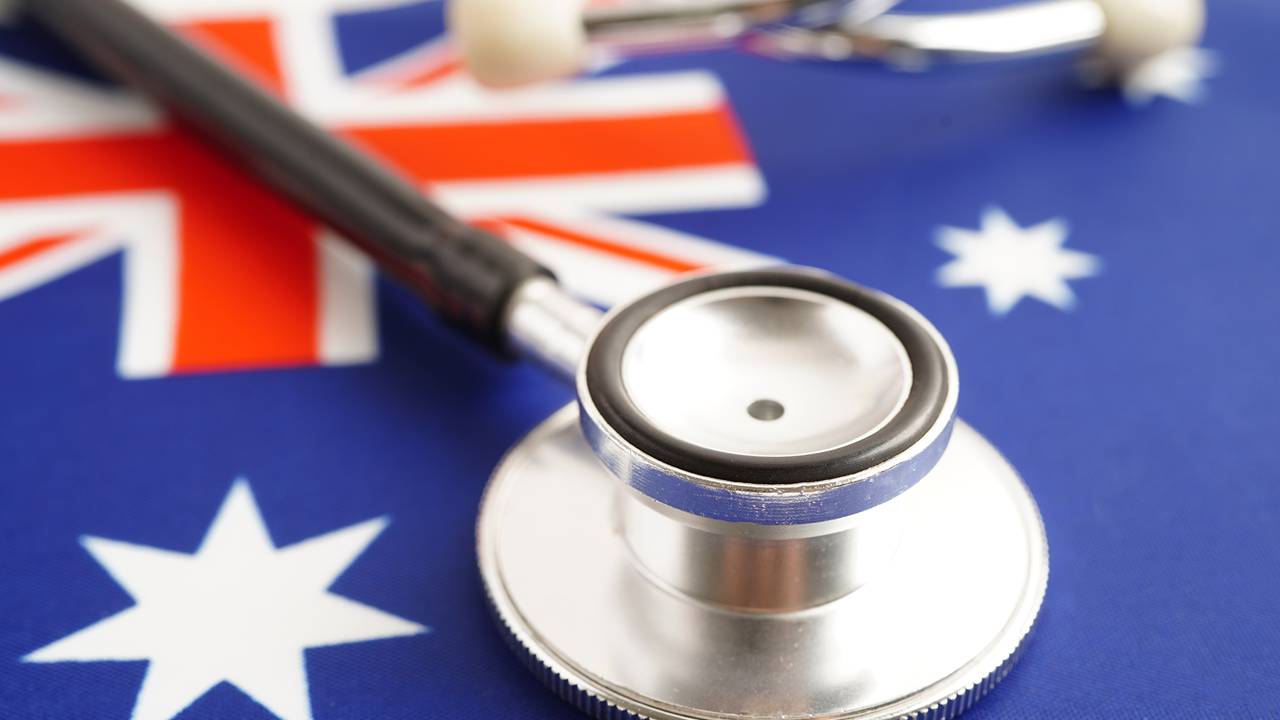Dr Boreham’s Crucible: Did this ASX biotech hit unicorn status without significant hurdles? Of Coris not
The Coris FDA assent isn’t the first rodeo for Nanosonics, given its inaugural Trophon device has been commercialised since 2009. What next for the billion-dollar biotech?

Stockhead
Don't miss out on the headlines from Stockhead. Followed categories will be added to My News.
Nanosonics (ASX:NAN) chief Michael Kavanagh says he’s “very proud” of the device maker’s ability to win US Food and Drug Administration (FDA) approval for its second medical probe sterilisation device, Coris.
He’s chuffed just not just by the assent, but because the device was approved under the more difficult de novo (new device) pathway.
Overwhelmingly, the FDA has approved devices under the 510(k) existing (predicate) device route.
“That’s significant for an Australian company, it’s not trivial,” he says.
“ promises to be the benchmark against which all new devices will be measured and personally I’m very proud of it.”
Initially, Coris is approved for cleaning colonoscopy probes, but the company plans further FDA submissions to expand these indications to cover all major categories of flexible endoscopes “over time.”
The FDA assent isn’t the first rodeo for Nanosonics, given its inaugural Trophon device (for ultra-sound probes) has been commercialised since 2009.
Nanosonics shares soared 15% on the day of the March 20 announcement.
From a nano-cap company to rather a big one
With a $1.4 billion market capitalisation, Nanosonics is our third-biggest device company behind Cochlear and Resmed (and ahead of the $880 million market cap Polynovo and not including radiotherapy firm Telix).
The Sydney-based Nanosonics was founded in 2001 by Maurie Stang, who was inspired by the need for hospitals to reduce infections caused by poorly cleaned medical devices.
The first device iteration was the Trophon EPR – as in Enhanced Protection and Reprocessing.
Nanosonics listed in May 2007, raising $27 million at 50 cents apiece.
The company launched the Trophon EPRs in 2009, which the FDA approved in 2011.
The company then launched the Trophon 2 – which incorporates a module to audit the procedures – in 2018.
In May 2011, the company struck an exclusive distribution with GE Healthcare for US and Canadian Trophon distribution (and non-exclusive rights elsewhere).
This compact was downgraded in early 2022 and the company has reverted mainly to direct sales, via a 130-strong US sales force.
A former Cochlear marketing executive, Kavanagh joined the company in July 2012 before becoming CEO in October 2013, replacing long-time CEO Dr Ron Weinberger.
What’s a Trophon?
About the size of a microwave, Trophons deliver a “sonicated mist” to sanitise probes to certified high level disinfectant (HLD) standards.
The units protect against nasty bugs including drug-resistant bacteria, fungi, blood-borne viruses and venereal diseases.
Yikes!
The Trophon process takes seven minutes and produces harmless water and oxygen, as a by-product of the disinfectant hydrogen peroxide.
To date, probe sterilising has involved a time-consuming procedure in an isolating room with dangerous chemicals.
As well as selling (or leasing) the units, Nanosonics also makes money – more money, in fact – from servicing and consumables.
The latter consists mainly of the hydrogen peroxide canisters.
A better way? Of Coris, of Coris
Kavanagh says the only common thread of Trophon and Coris is that they “are both owned by Nanosonics” (and they are both medical equipment cleaners.)
Coris is for cleaning flexible endoscopes, which have “complex channels” prone to biofilm build-up.
The key element is the interior lumens - channels - notably thin auxiliary air and water conduits to clean the endoscope’s camera and light source.
Some of these lumens are one millimetre in diameter and 3.5 metres in length, so we’re not talking about a quick spray with Handy Andy.
“When it comes to the mechanisms of action, the chemistry and the tech it is unique,” Kavanagh says.
In short, Coris uses finely engineered frictional forces to debride the contamination from the walls of the endoscope lumens.
Kavanagh dubs Coris as a “fantastic example of purpose meeting science which leads to innovation”.
The purpose of the device is clear.
In the US, around 35,000 adverse events with endoscopes occur annually and most are due to re-processing (re-cleaning) issues.
About 60 million endoscopies are undertaken globally annually, about one-third in the US.
The “science” refers to the need to understand the internal architecture of an endoscope.
Kavanagh describes Coris as a “true marriage between physics, chemistry and biology”.
A key reason for the FDA approval was that Coris can be used intuitively by hospital staff.
“We call it advanced simplification,” Kavanagh says.
“Take the hood off and Coris is highly complex engineering. Put it back on and it is very simple to use.”
The size of the Coris prize
The company is coy on the likely price of the Corises, but because they are more sophisticated than Trophons they will be higher priced (see below).
The US addressable market of 15,000 units compares with 60,000 for Trophons, because the Corises will be more centrally located in endoscopy departments.
But they will be used more, which means greater consumables sales and – in total – more revenue over the life of the units.
Nanosonics’ $145 million cash balance present the opportunity to fund or subsidise the initial Coris units - at least in some cases.
“Our cash balance gives us a large degree of optionality in respect of the business model and the rollout of the capital equipment,” Kavanagh says.
Broker Wilsons assumes a 30% market penetration, implying peak sales of US$250 million.
What now?
Nanosonics plans a staged launch Coris in the US in the December 2025 half, targeting selected hospitals to gain initial experience.
A full rollout is planned for the half-year to June 30, 2026.
Nanosonics will then apply for other applications that may include gastroscopies, enteroscopies, endoscopic ultrasounds and bronchoscopies.
The company is working on the requisite approvals in the UK, Europe and Australia, which are expected to be in place by the September quarter.
Finances and performance
Nanosonics posted a December half year net profit of $9.8 million, 58.2% higher, with revenue gaining 17.5% to $93.6 million.
Capital equipment – sales of the units – chipped in $24.4 million, up 11%
Sales of consumables – the canisters and the like – contributed $69.2 million, up 20%.
North American revenue (mainly from the US) gained 17% to $84.7 million – 90% of total turnover.
Europe contributed $5.9 million, up 3%. Asia Pacific revenues – mainly from Australia – were flat at $3 million.
Australia’s static result reflects the reality that the Trophons already have 70% market penetration in our wide brown land.
Research and development costs were $16.4 million, 24% of total expenses and 17% of revenue. Two-thirds of these costs pertained to Coris development.
Just to spice things up, the company cites a pre-tax ‘Trophon-only’ profit of $25.6 million, up 41%.
This in effect is what Nanosonics would have made without other development costs, notably for Coris.
Confident management has upgraded full-year guidance to revenue growth of 11-14%, compared with the 8-12% guided to earlier.
Nanosonics shares have risen steadily over the past year, from $2.64 in early April last year to the March 21 peak of $5.02.
The stock hit a pandemic-era record of $8 in December 2020.
Trophon numbers
Nanosonics reports that 1,730 Trophons were installed in the December half year. Allowing for a further 680 upgraded units, the installed base stood at 35,840.
Management notes a “significant upgrade opportunity” in North America (read: the US) with 940 new units installed.
A further 610 units were upgraded to Trophon 2s.
“In addition to continuing to grow the installed base, a core component of the North America growth strategy is to expand customer value for the existing 31,000 installed base,” the company says.
European installations grew more slowly than expected – 70 were added – but the company sees strong “adoption fundamentals” in the UK and Ireland.
Australian and New Zealand sales were lower, but that’s what happens when you account for 70% of the market already.
“Investment continues in Japan where the focus remains on market development to establish local guidelines,” the company says.
Trophon 2 units have a list price of US$7,950 ($A12,640) each, but ageing Trophon EPRs are advertised on-line for as little as US$200 (albeit with a hefty delivery fee).
Trumping Trump’s tariffs
Currently, Nanosonics makes the devices and at its Macquarie Park digs in Western Sydney.
In 2021, the company announced plans to more than double its manufacturing capacity.
But in the Trumpian made-in-America era, a US manufacturing presence is highly desirable.
In pre-Trumpian days, the company decided to expand its existing Indianapolis facility, to make Trophon and Coris consumables.
The facility has just been approved and is expected to be ready to go in the December half-year.
Kavanagh says the company was motivated more by easier customer access and the environmental benefit of not shipping the material for long distances.
“It was serendipitous. It was part of our evolutionary strategy.”
He says the company remains committed to manufacturing in Australia and hopes the sector will remain tariff-free.
If not, the impact will be subdued because of the importance of consumables in the revenue mix.
“The world is a crazy place at the moment and you need to keep your options open,” Kavanagh says. “Everyone is waiting to see what Trump does.”
Dr Boreham’s diagnosis
The company first had the idea about flexible endoscope cleaning seven years ago.
“We had many failures but learned from them,” Kavanagh says.
“There were many times we could have given up, but didn’t.”
Of course, gaining marketing approval is one thing and achieving sales is another.
Broker Morgans notes that “adoption rates typically are not linear, so further updates over the coming 12 months will aid the staging of market execution”.
Having done it all before with Trophon, the company has the benefit of experience.
“We have proven we can take a technology into North America and establish it as the standard of care,” Kavanagh says.
Meanwhile the half-year results show the company is making a decent fist at maintaining Trophon growth, helped along by the fact that close to one-third of the machines are more than seven years old and need replacing.
“Nanosonics is now a two-product company,” Kavanagh says.
“The Trophon show is definitely not over.”
At a glance
ASX Code: NAN
Share price: $4.61
Shares on issue: 303,590,974
Market cap: $1.39 billion
CEO: Michael Kavanagh
Board: Steve Sargent (chair), Kavanagh, Marie McDonald, Dr Lisa McIntyre, Dr Larry Marshall, Dr Tracey Batten, Gerard Dalbosco
Financials (half year to December 2024): revenue $93.6 million (up 18%), net profit $9.8 million (up 58%), earnings before interest and tax $8.7 million (up 187%), cash of $144.4 million (up 22.1%)
Major identifiable shareholders: Selector Funds Management 7.89%, ECP Asset Management 6.4%, Yarra Capital Management 6.3%, Maurie Stang 6.2%, Bernard Stang 5.4%
Disclosure: Dr Boreham is not a qualified medical practitioner and does not possess a doctorate of any sort. He has learned from his failures – usually after several attempts.
This column first appeared in Biotech Daily.
Originally published as Dr Boreham’s Crucible: Did this ASX biotech hit unicorn status without significant hurdles? Of Coris not


